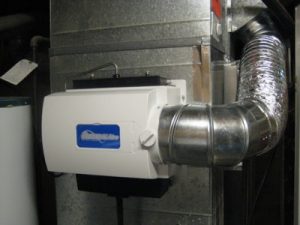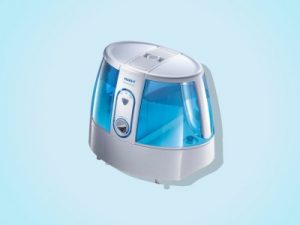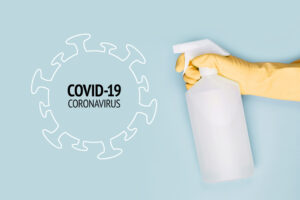
Can bathroom mold be dangerous? Mold basically produces allergens, so people who are sensitive might experience hay fever like asthma attacks and allergic reactions. Mold strains are considered to be non-toxic. The toxic variety is widely known as black mold, which can be dangerous.
There is nothing you should worry about other molds as they can be cleaned easily. However, some are more toxic and worrisome.
What are the Safe Molds?
If molds wipe away from the surface quickly, there is nothing you should worry about. However, it is important that you do your research as well as take proper precautions when cleaning it up or going near mold.
Even though the mold is not dangerous, the fact that it is growing might be a sign of something that is more serious including burst pipes, water leaks, and so on. It is always the best and safest to have professionals check your case for some reasons.
More often than not, black mold is renowned for being toxic. While there are some molds that produce toxins, the truth is that nobody likes to hear that even the non-toxic molds could make you sick.
Moreover, black mold is not the only toxic mold. So, if you have molds at all, it should be taken care of by professionals at the earliest date possible.
Every mold has the potential to cause some allergic reactions, headaches, rashes, asthma attacks, nausea, and dizziness. In others, they may also serious lung infections. It’s true that even with non-toxic variety. Implications are worse with the toxic variety mold. Such toxins may do harm even to those who are healthy.
Health Effects of Bathroom Mold
Majority of individuals are sensitive to mold that may cause irritation of mild skin rashes and respiratory passages. People who are allergic to mold would experience serious symptoms.
Such symptoms include asthma attacks, hives, irritated eyes, and lung infections. Too much exposure to mold may cause mold allergies in people who only had sensitivity to mold.
Spores released by molds are the primary culprit. That is the reason why it’s crucial to contain such spores when cleaning molds. Wetting the spot before scrubbing it would keep spores to be airborne.
How to Clean Mold
Before you clean mold, see to it that you take steps to protect your overall health condition during the process. Keep areas well ventilated through keeping windows and bathroom doors open and wear a protective gear.
It’s essential if you’re sensitive to molds for the process of cleaning may stir up the spores. Wear vinyl or rubber gloves to protect your hands from cleaning products as well as wear protective gear for your eyes to keep your eyes protected from splashes.
- Dampen moldy surface using water and cover that with a cleaning product. Take note that you must dampen moldy surfaces before you scrub it to avoid mold spores from releasing to the air.
- Use the scrubbing brush when loosening mold from the surfaces. If molds were into the grout lines, you might have to use a toothbrush to penetrate between the tiles.
- Get rid of the excess molds and cleaner from the surfaces and rinse the areas using clean water. Then, apply commercial fungicide or the water and bleach solution you have created and leave that to the surface for a few minutes. If you’re using water and bleach, there’s no need for you to rinse it. If you’re using commercial products, make sure to follow the directions or instructions provided on the bottle.
How to Prevent Bathroom Mold
Once you’re done cleaning your bathroom, dry the surface using clean towels and let bathroom air out. To avoid mold on the shower stalls and glass or tile doors and walls, spray them using water repellent products.
Another best way to prevent mold in showers and bathtubs is keeping them free of soap scum, which is comprised of dead skin cells and body oils and soap residue. Molds may thrive on this organic material.
Do not offer molds a feast of soap scum though switching to the non-soap based body wash and through cleaning shower bathtub and stall more frequently. Moreover, ensure that you use exhaust fans in the room. After bathing, leave the windows or doors open to decrease the level of humidity.
Decorate and furnish your bathroom while keeping in mind on how to prevent molds. Avoid using the things that made of wicker and some semi-porous and porous materials. Wall covering and flooring must be easy to clean and non-porous.
Special Things to Consider
Wash the moldy shower curtains, bath mats, towels, and bath rugs using hot water with bleach or vinegar. You must do this before you replace such items in the bathroom or you’ll spread the mold spores back to your newly cleaned surfaces.
There are times that molds have stained grout so bad that bleach won’t do much good about it. With this situation, it’s best to get rid of the old grout and consider adding new ones as it’s more convenient.
When to Call Professionals?
Only professionals can evaluate the situation and they can determine how dangerous bathroom mold can be. Thus, any sign of molds, proper contractor must be called to ensure that your bathroom is safe.
Mold may grow quickly and some won’t go away by themselves. But, they’ll continue growing and might get worse. So, the sooner you contact a professional, the better.
Toxic and dangerous molds are nothing to mess with and must be dealt with as soon as possible. Every time you and your family is exposed to such molds can be dangerous. That is the reason why it is best to have the assistance of professional contractors checks your situation.
In this case, you’re better off being safe through doing so than dealing with deadly problems later. Unless you are a professional, you might not distinguish between different kinds of molds and whether they’re dangerous or not.






































